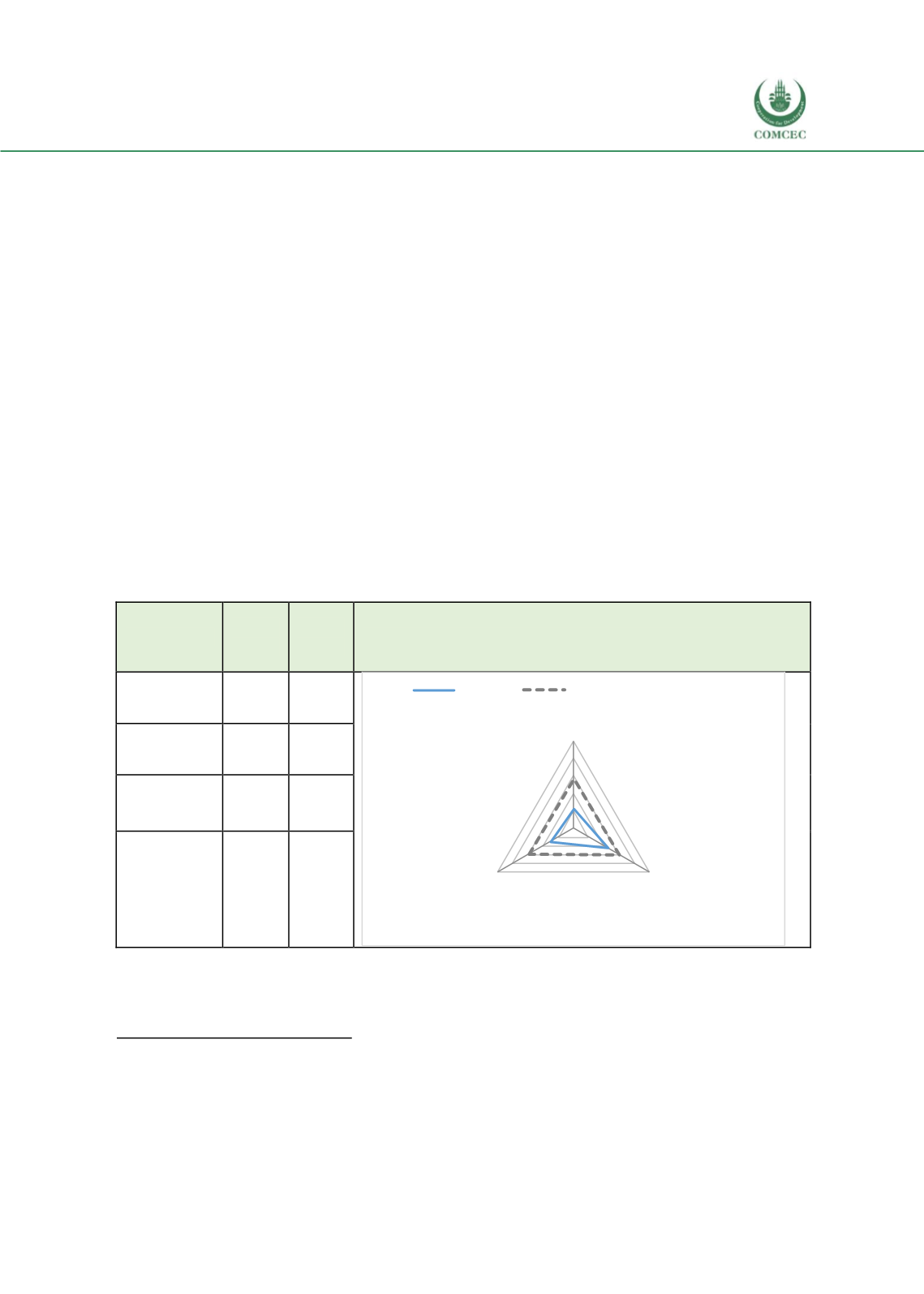

Increasing the Resilience of the Food Systems
In Islamic States in Face of Future Food Crises
83
4.3.
Field Case Studies
4.3.1.
Niger
Background
Niger is the largest landlocked country in West Africa. It also remains one of the poorest
countries in the world, with a poverty rate of 44.1%.
329
An estimated 80%
330
of the population
works in the agricultural sector, contributing nearly 47%
331
to Niger’s GDP. This sector is, thus,
highly significant to the country’s overall economic stability.
Overview of Food Security in Niger
According to the EIU Food Security Index 2018, Niger ranks 104th
332
among the 113 countries
evaluated. Among the OIC countries, Niger only ranks ahead of Chad (108th), Sierra Leone
(109th) and Yemen (110th). Nearly 20%of the population is vulnerable to food insecurity. When
there are rainfall deficits, this increases to nearly 30%.
333
This vulnerability is worsened by
constraints such as a lack of (or inadequate) access to seeds, fertilizers, and capital; weak
markets and governance systems; climatic variations, crop pests and disease outbreaks, and
insufficient water resources.
334
Figure 22: Niger Food Security Performance
Metric
Global
rank
Global
score
Score visualization
Availability
96
45.1
Access and
Affordability
106
22.5
Quality and
Safety
104
30.2
Overall
104
33.7
Source: EIU Food Security Index, 2018
329
Country Overview. Retrieved from:
https://www.worldbank.org/en/country/niger/overview330
Niger. Retrieved from:
https://www.feedthefuture.gov/country/niger/331
Ibid
332
The Global Food Security Index. Retrieved from:
https://foodsecurityindex.eiu.com/333
Niger. Retrieved
fromhttps://www1.wfp.org/countries/niger334
USAID. (2017).
USAID Office of Food for PeaceFood Security Desk Review for Niger
. USAID.
0
20
40
60
80
100
1) AFFORDABILITY
2) AVAILABILITY
3) QUALITY AND
SAFETY
Niger
Average score (all countries)
















